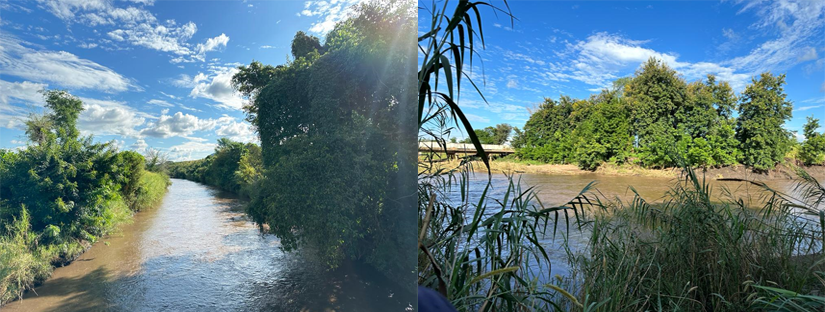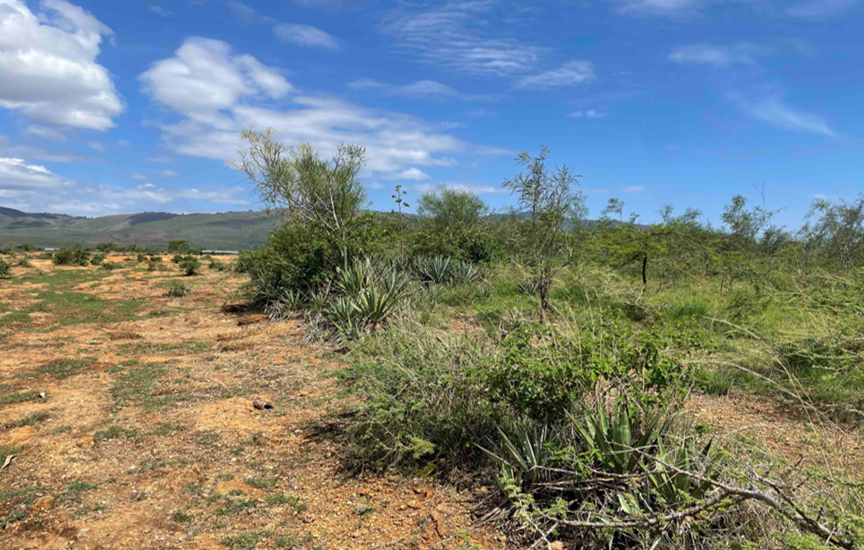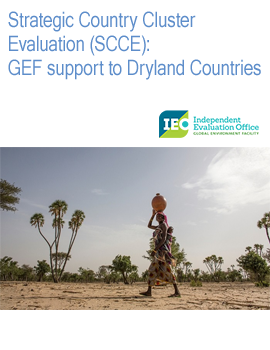Often neglected by donors and recipient countries alike as considered unproductive lands, drylands cover a significant portion (40 percent) of the Earth land surface and are home to over two billion people, many of whom are among the world poorest and most vulnerable populations. These regions face a myriad of environmental challenges, including water scarcity, land degradation, desertification, and climate variability, to name a few. Yet, the picture is not all negative. Research in India and China has shown that drylands can give higher returns on investment than many so-called high-potential lands1. More recent research conducted in the Sahel, shows that every US dollar invested into dryland restoration yields on average US$1.2 returns, and that, at most, ten years are needed for restoration activities to break even from the social perspective, accounting for both market-priced and non-market ecosystem benefits (Mirzabaev, A., Sacande, M., Motlagh, F. et al. 2021). Time is up for a change in narrative.
In 2023, the Independent Evaluation Office of the Global Environment Facility (GEF IEO) conducted the Strategic Country Cluster Evaluation (SCCE) on GEF Support to Dryland Countries, a comprehensive assessment of the relevance, coherence, results, and sustainability of GEF interventions in countries with a large extent of drylands. The assessment included analyzing the extent to which GEF interventions have produced targeted environmental outcomes and associated socioeconomic co-benefits, and the consideration of cross-cutting issues such as gender, resilience, and the private sector in GEF programming and implementation in dryland countries.
The evaluation was an interesting journey of discovery for me. It was encouraging to find out that the GEF has concentrated its efforts on the right issues, e.g., land degradation and desertification, climate change, and deforestation, with increasing attention to biodiversity over time. While attention to water scarcity and drought have been gaps if compared with other environmental challenges in drylands, these issues are starting to be identified and addressed through the GEF-8 programming directions focus on drought. On the policy front, GEF drylands projects identified misalignments at design level, but didn’t succeed in mitigating their impact on outcomes and sustainability; in fact, national policy coherence at design level did not automatically translate into local policy coherence during implementation.
Despite the limitations encountered on measuring environmental progress the results observed during our field visits are encouraging. Several completed drylands projects reported positive environmental and socioeconomic benefits. For example, in Malawi, World Bank and UNDP sustainable landscape management projects together improved sustainable land and water management practices (such as riverbank afforestation) and agricultural productivity on 480,000 ha, more than 10 percent of the country agricultural lands.

Balaka district, Malawi: Stabilizing the Mwayi and Mkasi rivers through riverbank reafforestation (GEF ID 3376)
In Niger, three successive GEF co-financed World Bank Community Action Programs (CAPs) delivered over 250,000 ha under improved soil and water management practices, with 700 local management committees established and land tenure commissions set up in 160 communities. As a result, vegetation coverage increased, reducing erosion and soil salinity through a variety of activities and micro-investments such as sand dune fixation, assisted natural regeneration, agropastoral land restoration, conservation agriculture practices, beneficiary vegetable gardens, livestock corridors, and improved cookstoves.

Madjekameram and Kosseri Blabrim districts, Niger: Fixed land dunes and beneficiary vegetable gardens (GEF ID 3381)
In Ethiopia, 154,000 ha of degraded farmland and communal land were restored through gully treatment, area closures, reforestation, and afforestation. Agroforestry and area closures done expressively to limit free grazing led to a 5 percent increase in vegetation cover. Over a five-year period, gross primary production grew by 14 percent on average in project areas affected by severe droughts and by 3 percent in other project areas, suggesting important drought-buffering effects. Results showed a clear difference between treated and control locations.

Dugna Fango district, Ethiopia: Non restored and restored land areas side by side (GEF ID 9135)
Unfortunately, attention to conflict and land tenure in GEF strategies - two of the most critical issues in dryland geographies - has not yet sufficiently conveyed to project design. GEF projects developed local capacity for decentralized decision making but established multi-stakeholder governance platforms had difficulties in self-sustaining after closure. GEF drylands projects supporting the establishment of local bylaws were hindered by weak enforcement by national and local authorities. Land and resource use rights are especially weak in communally managed drylands. Less than a third of GEF drylands projects have addressed conflict or land tenure.
A last point is worth calling attention to. While the GEF has for the most part succeeded in fostering synergies between environment and development priorities in drylands, it has not yet paid enough attention to mitigating trade-offs. Only 15 percent of recent projects discusses the need to identify and address trade-offs. In projects on pasturelands, for example, the struggle between socioeconomic and environmental goals reduced outcomes, with negative impacts on natural resource governance.
To conclude, by calling attention of GEF decision makers and project designers to local policy leakages, conflict resolution and land tenure rights, and to mitigating the trade-offs between environmental and socioeconomic objectives, the Drylands SCCE intends to contribute to a new and appealing narrative of drylands, as lands of opportunity and hope.
[1] In China, a combination of agricultural reform and investment in agricultural research and development, education, roads and electricity stimulated growth in the non-farm rural sector, supporting development of agriculture as well as providing job creation for urban migrants (Fan (ed), 2008). A similar pattern was observed in India where rural non-farm employment grew and poverty declined in response to infrastructure investment, particularly in places where literacy rates were raised (Ravallion and Datt, 1999).

